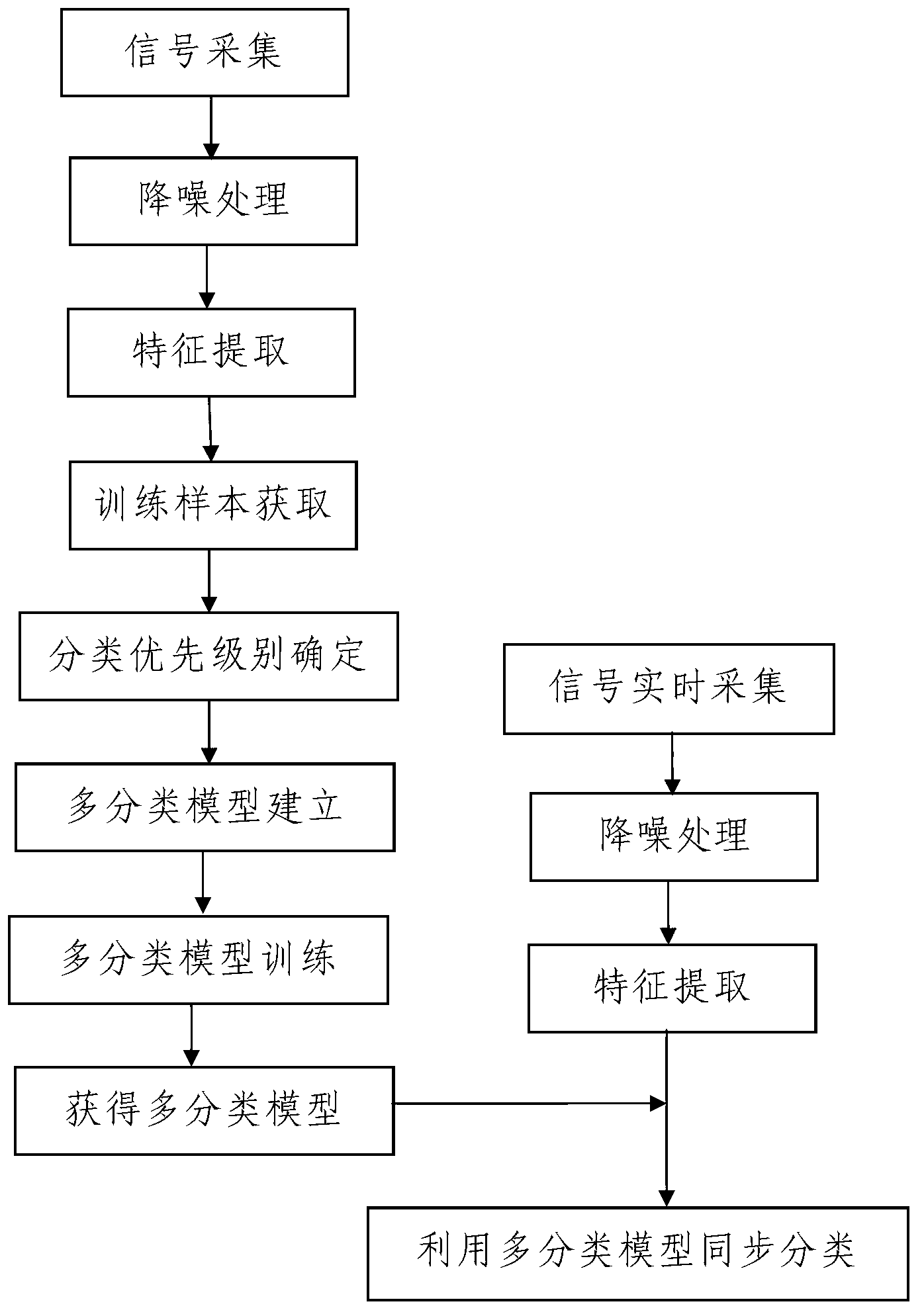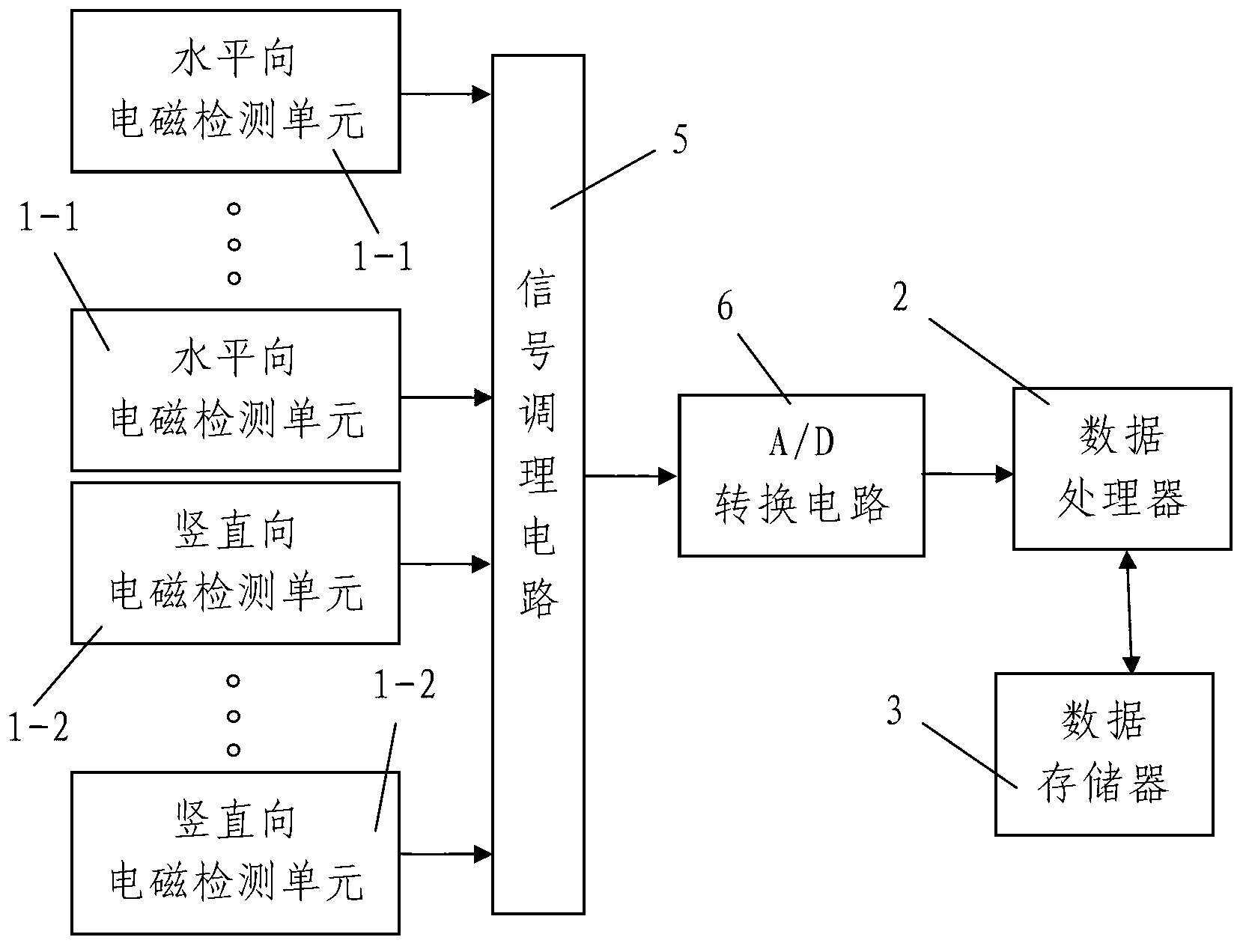Binary tree-based SVM (support vector machine) classification method
A technology of support vector machine and classification method, which is applied in the classification field based on binary tree support vector machine, which can solve the problems of slow speed, slow training speed, unbounded promotion error and misclassification.
- Summary
- Abstract
- Description
- Claims
- Application Information
AI Technical Summary
Problems solved by technology
Method used
Image
Examples
Embodiment Construction
[0070] like figure 1 Shown is a classification method based on binary tree support vector machine, including the following steps:
[0071] Step 1. Signal acquisition: Use the state information detection unit to detect the working state information of the detected object in N different working states in real time, and transmit the detected signals to the data processor 2 synchronously, and obtain correspondingly different signals from the N types. N groups of working state detection information corresponding to the working state, the N groups of working state detection information all include multiple detection signals detected by the state information detection unit at different sampling times, where N is a positive integer and N≥3 .
[0072] Step 2, feature extraction: when the data processor 2 receives the detection signal transmitted by the state information detection unit, extract a set of characteristic parameters that can represent and distinguish the detection signal f...
PUM
 Login to View More
Login to View More Abstract
Description
Claims
Application Information
 Login to View More
Login to View More - R&D
- Intellectual Property
- Life Sciences
- Materials
- Tech Scout
- Unparalleled Data Quality
- Higher Quality Content
- 60% Fewer Hallucinations
Browse by: Latest US Patents, China's latest patents, Technical Efficacy Thesaurus, Application Domain, Technology Topic, Popular Technical Reports.
© 2025 PatSnap. All rights reserved.Legal|Privacy policy|Modern Slavery Act Transparency Statement|Sitemap|About US| Contact US: help@patsnap.com



